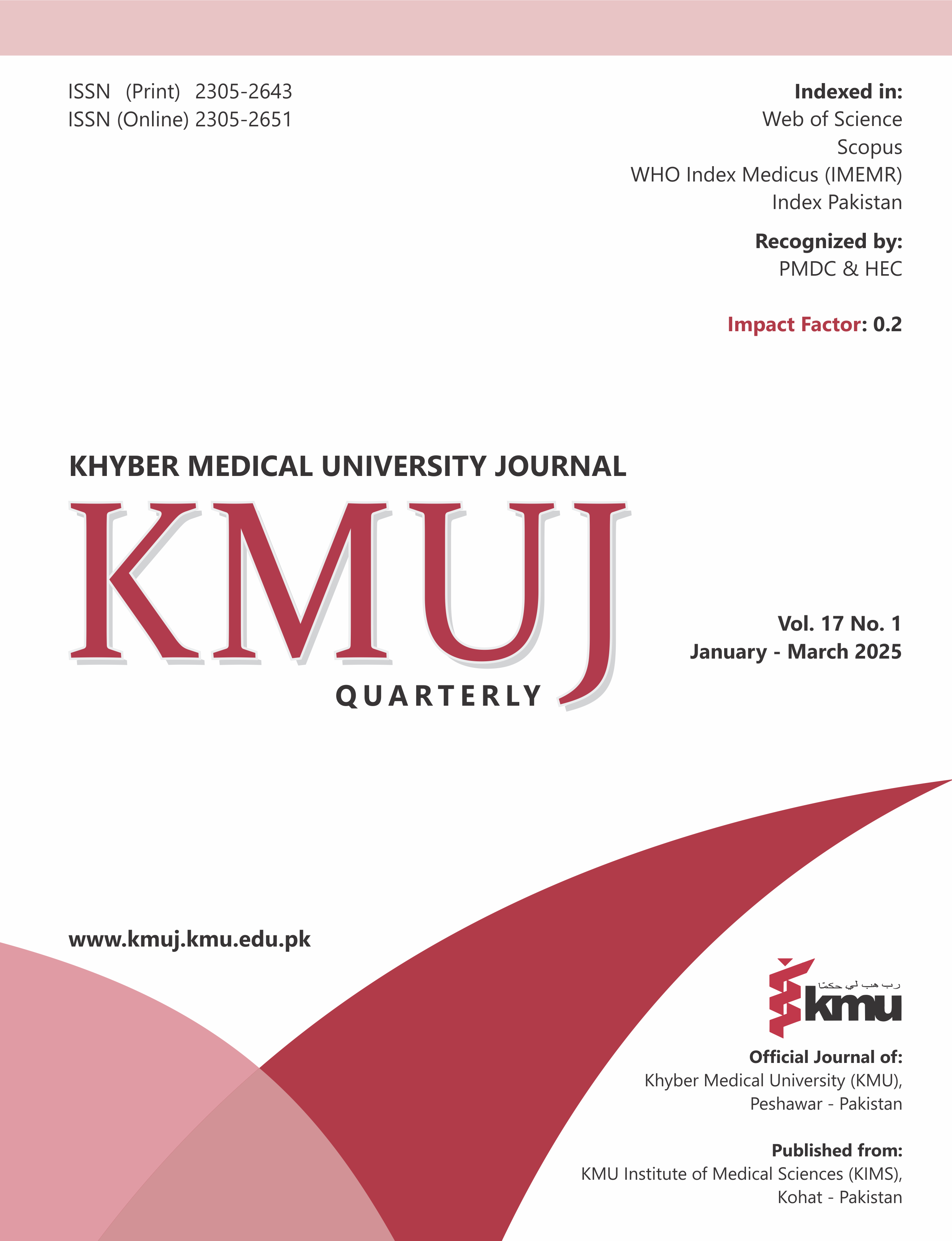Point of care affirmability of patient safety criteria at tertiary healthcare level in Peshawar-Pakistan: a cross-sectional evaluation
Main Article Content
Abstract
Objective: To evaluate the level of compliance with the World Health Organization’s (WHO) recommended patient safety criteria in tertiary healthcare facilities in Peshawar-Pakistan.
Methods: This cross-sectional study evaluated the implementation of WHO patient safety criteria in six tertiary healthcare hospitals in Peshawar, Khyber Pakhtunkhwa, Pakistan, between April 2023 and July 2024. Ethical and administrative approvals were obtained from Khyber Medical University and the respective hospitals. No personal data were collected, and verbal consent was secured from all participants. The assessment was conducted using the WHO Patient Safety Assessment Manual, with 355 evaluations analyzed across three public sector and three private sector hospitals to determine conformity with point-of-care safety standards.
Results: Overall, 28.1% of criteria fully conformed to WHO recommendations (95% CI: 27.6–28.6%). Compliance was higher in public-sector hospitals (35.6%) than private institutions (22.3%, Z=24.6, p <.001, r =.2). For Critical Criteria, where WHO mandates 100% adherence, public-sector hospitals achieved 54.0% (95% CI: 51.3–56.6%), compared to 44.1% (95% CI: 41.8–46.5%) in private hospitals (Z=5.5, p <.001, r =.1). Core Criteria compliance was also significantly higher in public-sector hospitals (18.9%–48.8%) than private (18.0%–25.0%). Developmental Criteria had the lowest compliance, with some private hospitals failing to meet any criteria (0%), while public hospitals ranged from 14.5% to 37.9%.
Conclusion: The current quality assurance programs in these hospitals are inadequate in ensuring compliance with even the most critical patient safety criteria. Urgent and coordinated efforts are required to bridge this gap and enhance patient safety standards.
Article Details

This work is licensed under a Creative Commons Attribution 4.0 International License.
Work published in KMUJ is licensed under a
Creative Commons Attribution 4.0 License
Authors are permitted and encouraged to post their work online (e.g., in institutional repositories or on their website) prior to and during the submission process, as it can lead to productive exchanges, as well as earlier and greater citation of published work.
(e.g., in institutional repositories or on their website) prior to and during the submission process, as it can lead to productive exchanges, as well as earlier and greater citation of published work.
